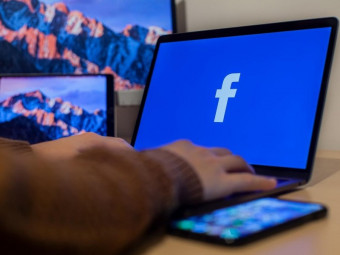Facebook is one of the largest social media platforms that has users from all over the world. Every person that owns a smartphone or a laptop, has a Facebook account. With more than 2.7 billion users, it’s only logical for businesses to use it as a marketing tool. Out of the many marketing tools, Facebook is the single most used and it also provides you with the flexibility to utilize digital marketing in an advanced way.
Behind only Google, Facebook is rich in data and you can use all that data according to your requirements. With Facebook advertising cost decreasing every year, businesses can save a lot of money and target their audience in the best way possible.
Advantages of Facebook marketing
If you are still wondering, why use Facebook marketing? Here are a few advantages of using Facebook as the primary source of advertising and marketing.
Flexible demographic targeting
As different products are meant for different users, businesses strive to categorize their audience for better targeting. As a platform that has the most effective analytics, Facebook already divides its users into different categories. Using the data users provide to create an account and their activities on the platform, Facebook gets a gist of their interests, hobbies, favorites, and much more. Users are allotted to different categories by their gender, age, language, political interests, job title, location, and many others. This makes it easier for businesses to direct their marketing campaigns and ads to their desired audience.
Many ad types to choose from
When it comes to showing ads on Facebook, Facebook advertising is the most flexible platform in terms of ad types. Most of the other platforms only let you display read-only ads to which you can only add search engine optimization techniques, but that’s not the case with Facebook. You get to choose from many different categories of ads and on top of that, you can also choose where to put them in the app. Static images with texts and links to your website, a collection of over 10 separate images, a slideshow of images with music, and images of multiple products in a single ad are the different types of ads that utilize images. With video ads, you have the flexibility to show them in stories, assign them to stories or long videos, or stand-alone videos with a description that leads the users to your website.
Faster services and results
Unlike other ad campaigns where meeting all the requirements takes a lot of time and displaying ads, even more, Facebook advertising policies are easily met. All you have to do is make an ad that you think will present your brand or products to the audience in the best possible way and submit it on Facebook. As soon as the ads are submitted to the ads manager, they are reviewed by Facebook, and after that, they are immediately cleared for viewers. It is one of the most productive digital marketing strategies as your ads go live within 24 hours and you see results much faster than any other form of advertising.
Custom ads for specific objectives
Facebook lets you prioritize your goals and create custom ads to fulfill them. While displaying ads, different people might have different objectives such as lead generation, website referrals, call-to-action promotions, increased site traffic. So, whether it’s the brand awareness that you want to emphasize or increased ROI, or greater conversions, you can have them all.
Testing tools to check ad viability
Sometimes, it might be difficult to check whether a specific type of ad will perform better than the other one. A/B testing tools let you customize your ads with different variants and display 2 or more of them to figure out which drives the most audience. After the data collection, you can compare results for both and choose the one which provides better engagement with the audience.
Affordable and low-cost advertising
The Facebook advertising cost is lower than any other platform and is expected to decrease even more as it decreased by 6% in the last year. The prices of ads vary according to products, business types, industry, and ad types. You can expect to pay somewhere between a few cents to a dollar or two on every click. On average, the cost of a single pay-per-click ad is $1.72 which combines all the different industries with lower and much higher price ranges.
 Install Studocu Chrome Extension
Install Studocu Chrome Extension








